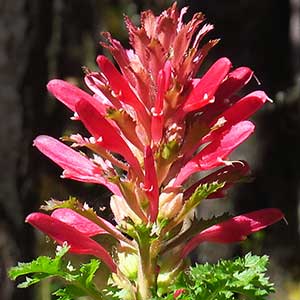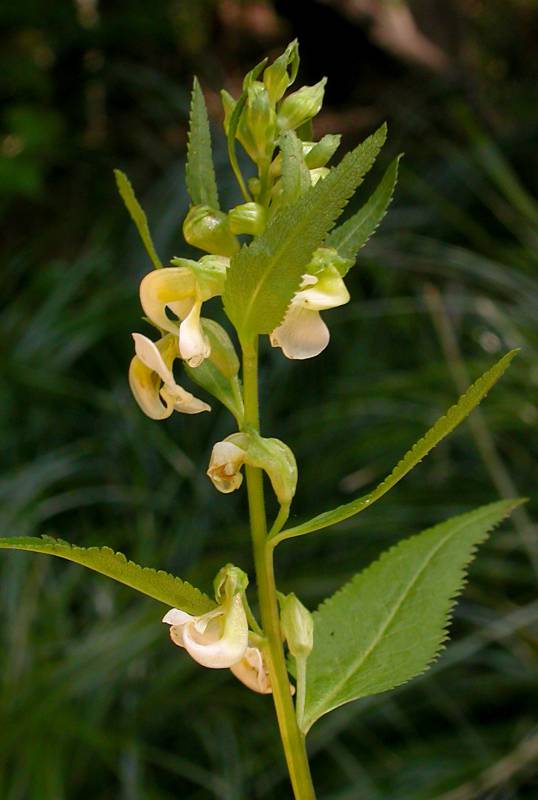Pedicularis densiflora
Pedicularis racemosa
leafy lousewort, sickletop lousewort
Leaves alternate, the lowermost much reduced, the others well-distributed along the stems, sub-sessile, lanceolate to linear-oblong, 4-10 cm. long and 5-15 mm. wide, doubly serrate, the secondary teeth inconspicuous.
Inflorescence a lax, elongate raceme, the lower flowers often in the leaf axils, the middle and upper bracts progressively smaller and less leaf-like;
calyx deeply cleft below into 2 oblique, broad-based segments, each with an acuminate tip;
corolla purplish-pink to white, 1-1.5 cm. long, bilabiate, the hooded upper lip strongly arched and tapering into a slender, down-curved beak which often touches the prominent, shallowly3-lobed lower lip;
stigma capitate.
Capsule glabrous, flattened, curved.
Pedicularis densiflora
Pedicularis racemosa
- Local floras:
BC,
CA,
OR,
WA
- Local Web sites:
CalFlora,
CalPhotos,
Flora NW,
PNW Herbaria,
Turner Photog.
WildflowerSearch
iNaturalist (observations)
USDA Plants Database
- LBJ Wildflower Center
- SEINet
- Plants of the World Online
- Encyclopedia of Life
- Wikipedia
- Google Image Search



